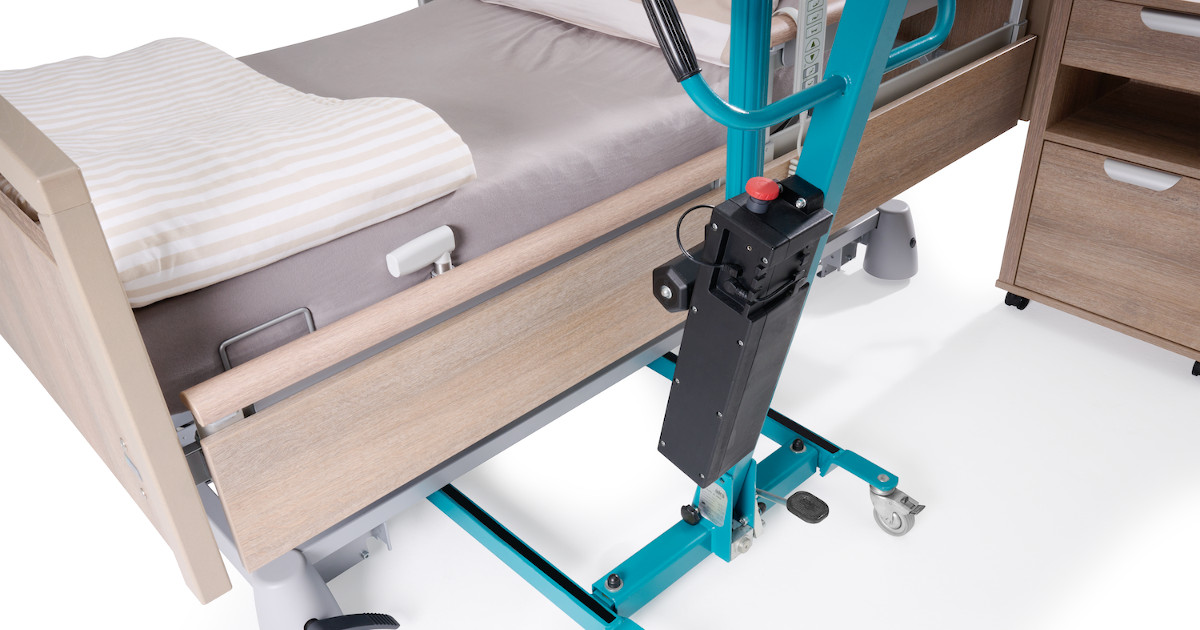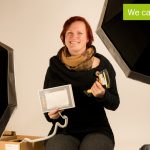According to the Association for Nursing Assistance, almost two million people in Germany are cared for by relatives at home. The other half of the total of 4.1 million people in need of care are cared for by professionals in just under 15,000 facilities for the elderly. The daily routine is mentally and physically stressful. Here you can read about the aids that make bedside care easier for those in need of care and their assistants.
1. Positioning rolls and half rolls
„A patient’s bedsore is still a major problem in nursing-medical care,“ says the German pressure ulcer care guide. For immobile seniors, the open wounds, which often remain for months, can be extremely painful and psychologically challenging. Yet they are preventable with a dry nursing bed and regular repositioning. Positioning roller or half rollers can help with the process. By sliding the cotton roller, which can be adjusted to fit the body, caregivers can relieve pressure on areas of the senior’s body. The rolls come in a variety of sizes and styles, so they fit body parts perfectly. For example, the heels, which are at high risk of pressure sores, can be elevated and completely relieved of body pressure using half bedding rolls or special heel protection tubes. Whole bedding rolls, on the other hand, are particularly suitable for elevating under the neck and knees.
2. Emergency buttons
Independence brings quality of life. „Independence, individuality and mobility play an important role for most people well into old age,“ says the Deutsche Seniorenliga e.V. Since bedridden seniors lose a large part of their autonomy, it is particularly important to support those affected in their self-determination in other ways. Emergency buttons are an important tool for this. They allow bedridden people to be on their own until they really need help – maximum freedom and safety in one. After all, small, everyday tasks, such as combing hair, can still be performed independently even by immobile persons. If the hairbrush should fall off the bed, for example, the alarm button can be used to inform the person helping. Emergency buttons thus provide the possible degree of independence. Meanwhile, they relieve the caregivers, since they do not have to be permanently on site or in the same room.
3. Transfer and lifting aids
Not every caregiver has the strength to lift their loved one out of bed. Even if they did: In the long run, it would be too physically stressful – especially for the back. That’s why there are transfer and lifting aids to make caregiving easier in the home and professional settings. „The transfer of bedridden persons requires a lot of muscle strength, as well as the right gentle hand movements so that the person in need of care is not injured,“ says pflege.de. Support can be provided, for example, by position-changing aids, such as the patient lift, which move seniors from bed to wheelchair. Or sliding mats that provide gentle repositioning for the caregiver’s and patient’s bodies. Patient lifting cushions are also popular. These are air mattress-like back supports that are inflated under the person in need of care at the push of a button. This allows the patient to sit up slowly, safely and with minimum effort.
4. Suitable care beds and digital assistants
With increasing immobility, care beds are becoming the pivotal point for seniors. The requirements for the „point of care“ are clear: functionality, comfort and safety. „Many falls among the elderly occur around the bed, often resulting in injuries such as a fractured neck of the femur, broken arm or facial injuries. Choosing the right sleep furniture can go a long way toward preventing such injuries,“ according to the Institute of Social Services. Nursing home bed manufacturers such as wissner-bosserhoff have therefore made it their business to create fall-proof beds for seniors. The sentida sc, for example, offers an extra-low bed position of 23 centimeters, so that falling out of bed is more like sliding out. Additional safety is provided by digital assistance systems such as SafeSense®3, which allows caregivers to see when seniors are in or out of bed on tablet & co. The system also uses a sensor under the mattress to detect changes in pressure. The smart tools are therefore not only used to detect falls at an early stage. At the same time, they provide an alarm system for repositioning and thus prevent pressure sores.
5. Flexible side elements and other standing aids
Side elements on the nursing bed provide additional protection. „They are a safe get-up aid – alone or with support – and easy to grasp,“ wissner-bosserhoff advertises the SafeFree® side rails on its website. The side elements can be added flexibly as required and thus offer optimum all-round protection – from head to toe. For seniors who still have sufficient strength in their arms, raising aids are also suitable for sitting up independently. For example, the bed ladder, which allows people in need of care to pull themselves up to the seat rung by rung. Or the classic trapeze handle, which enables patients to get into the upright position.


